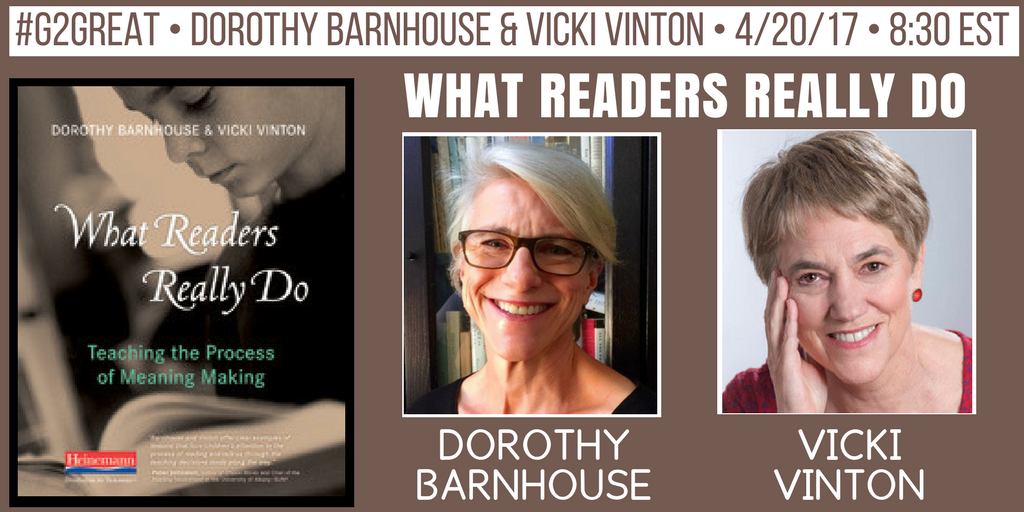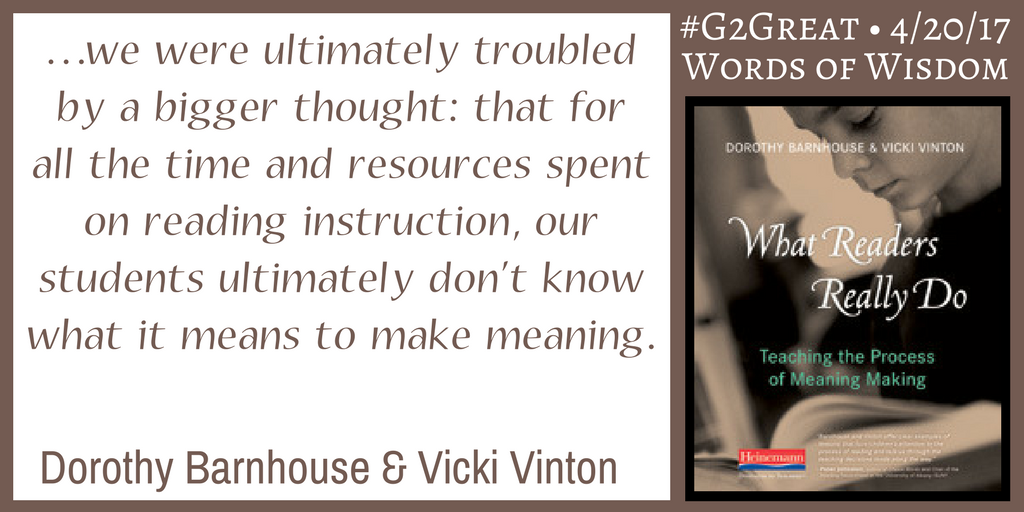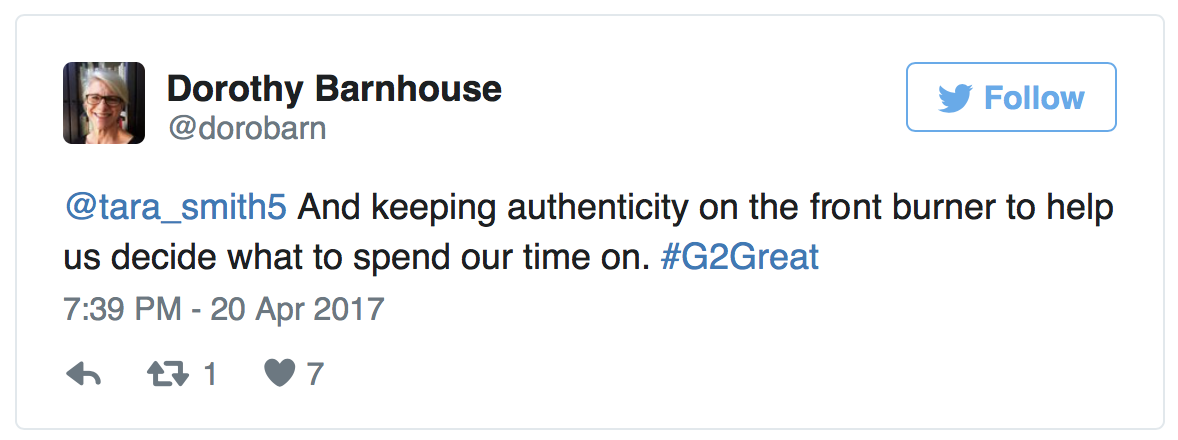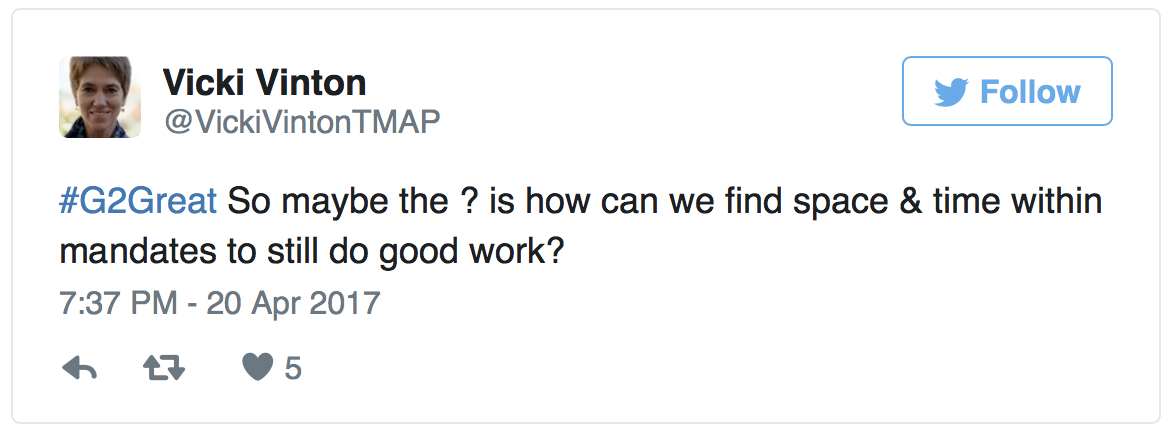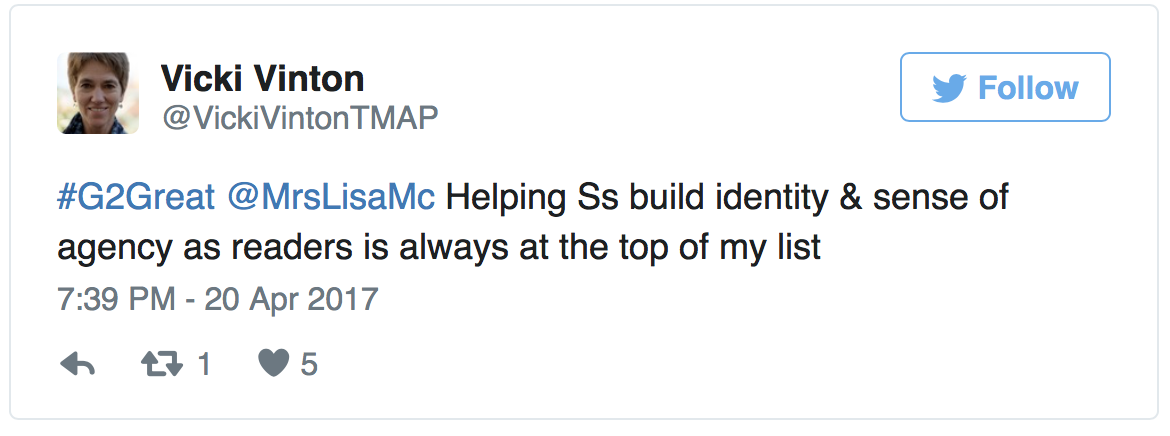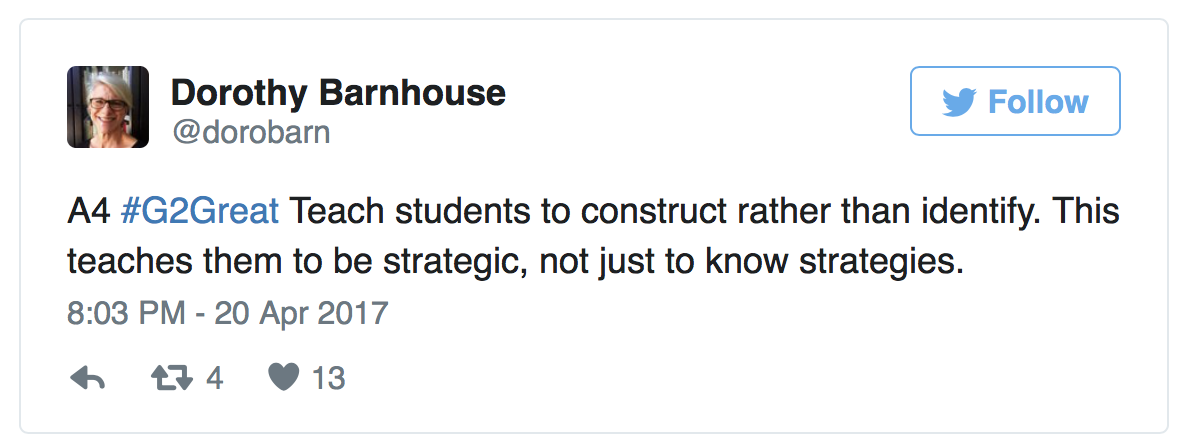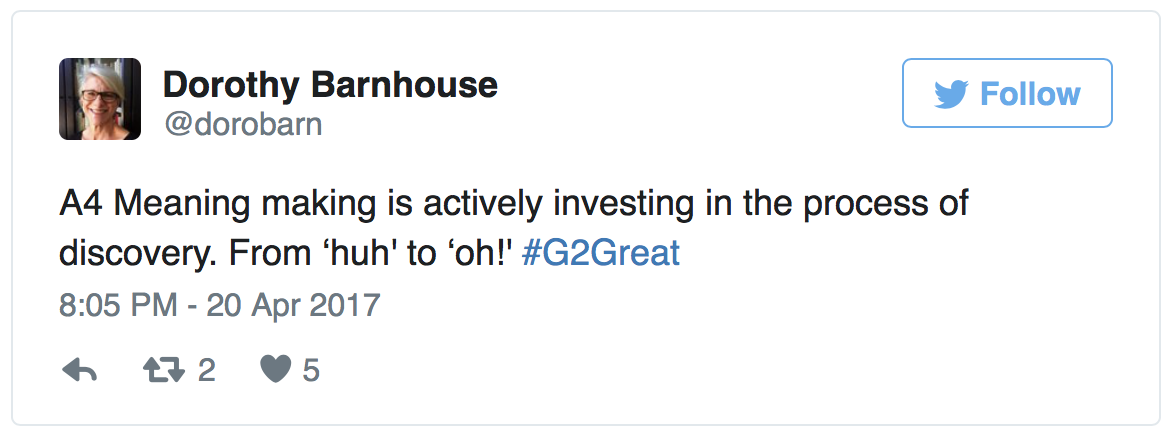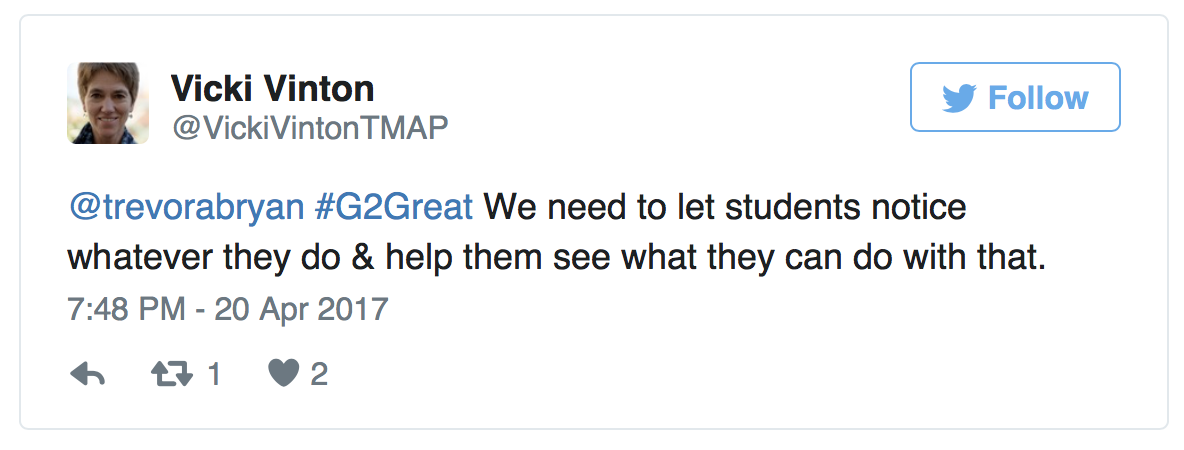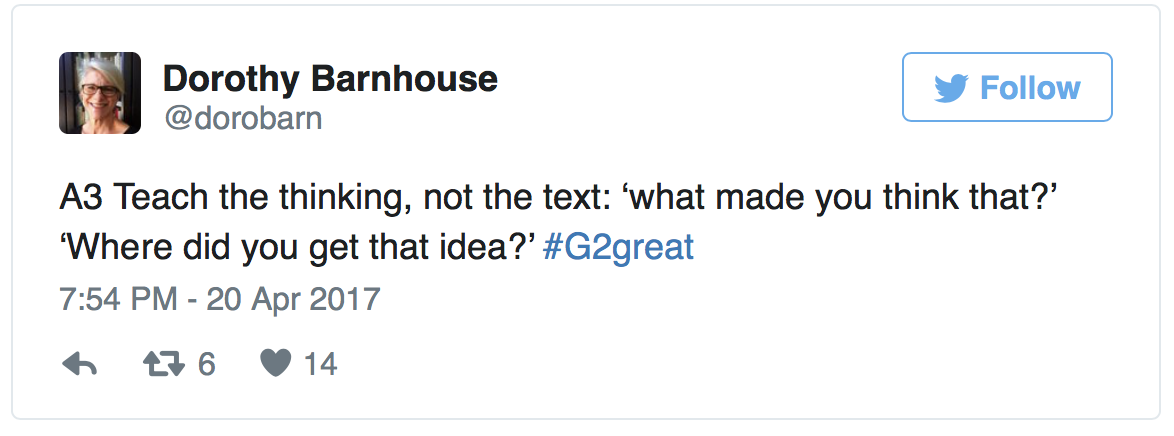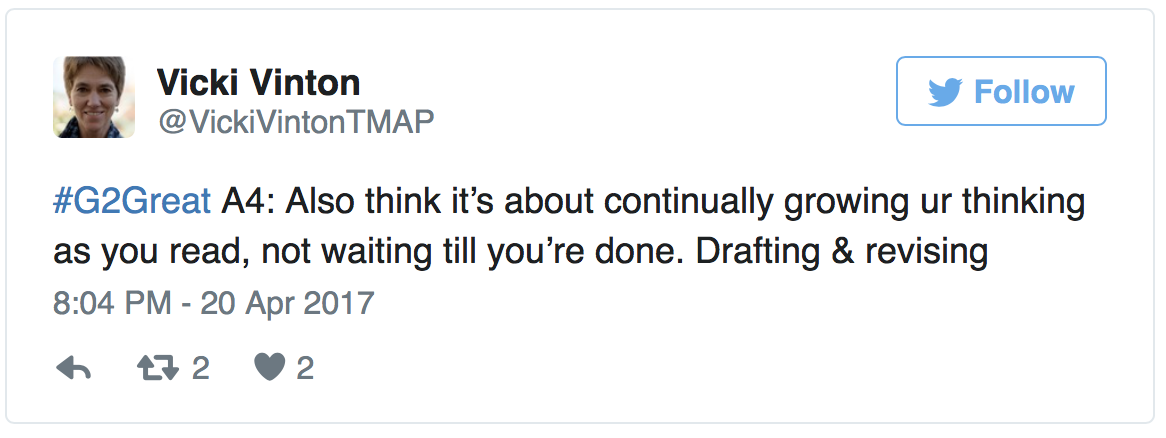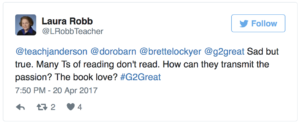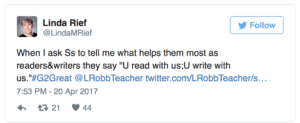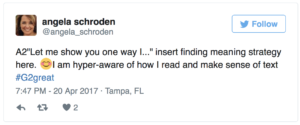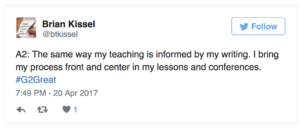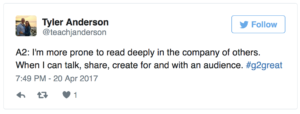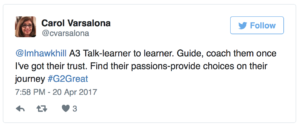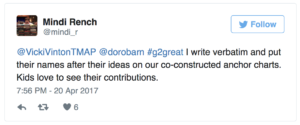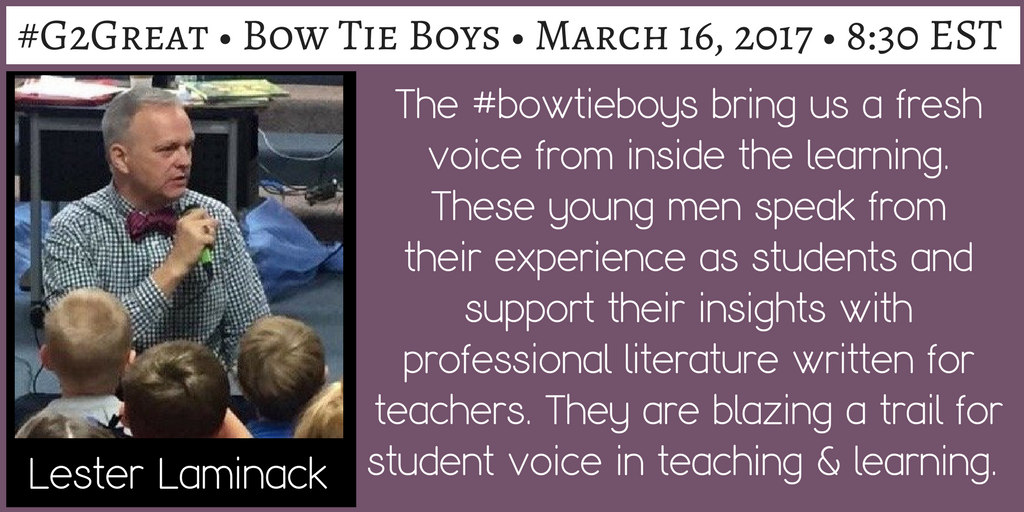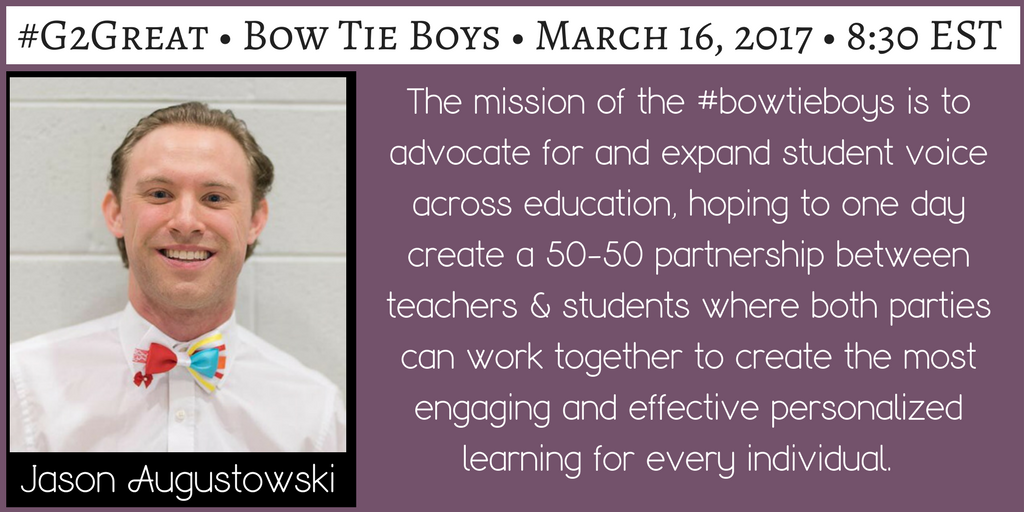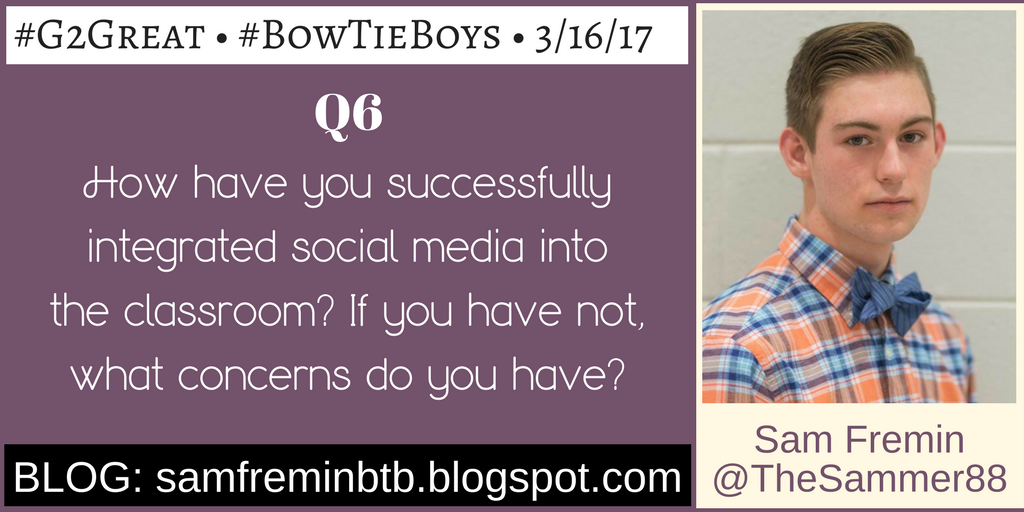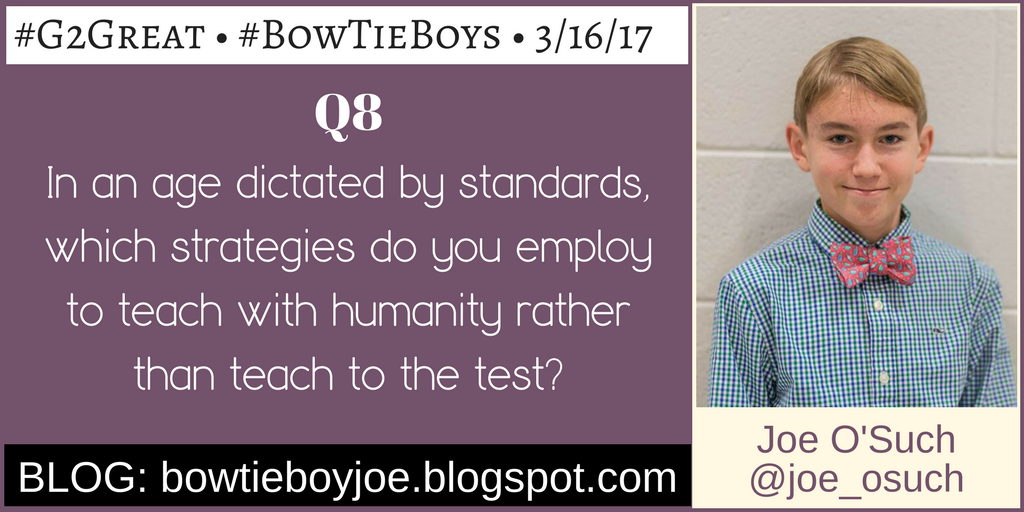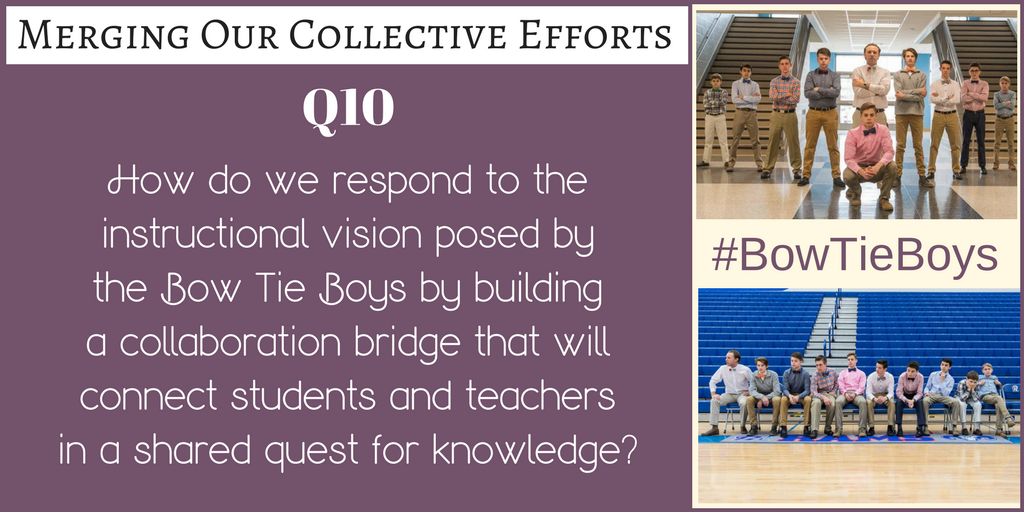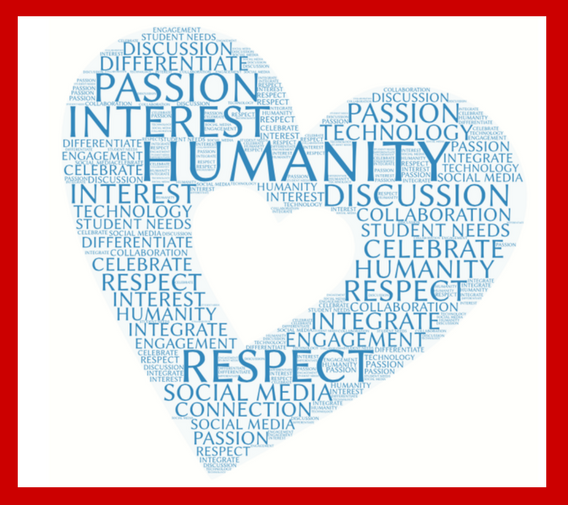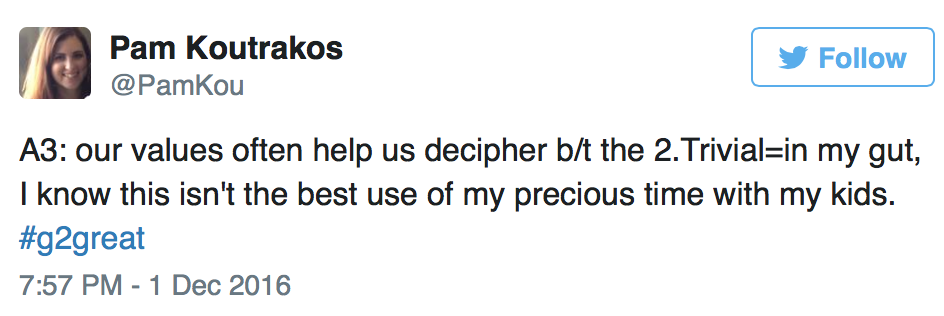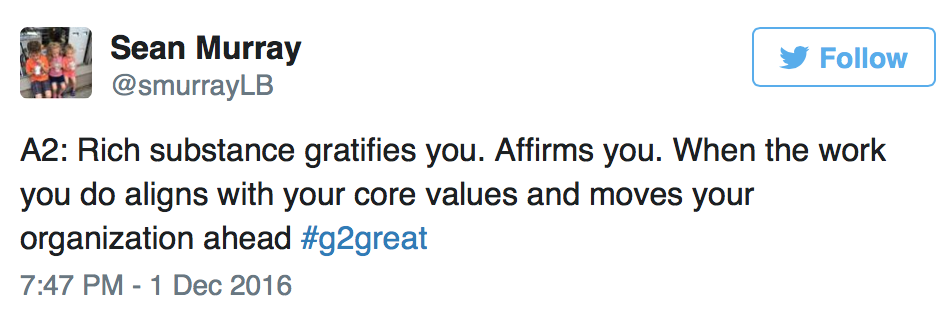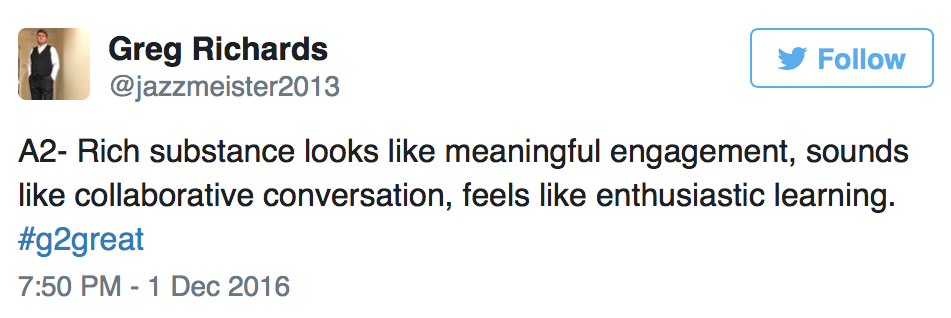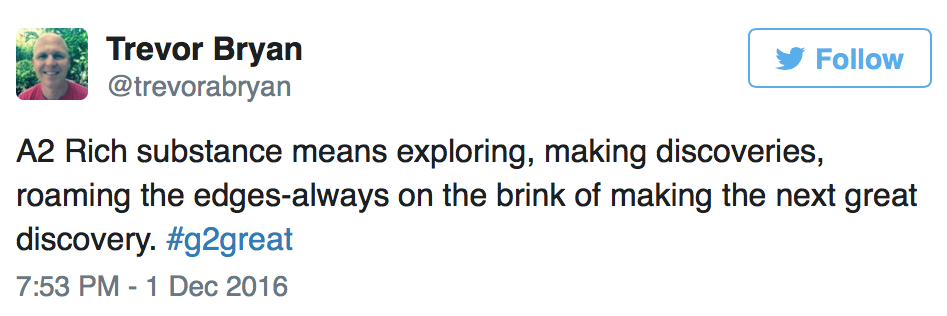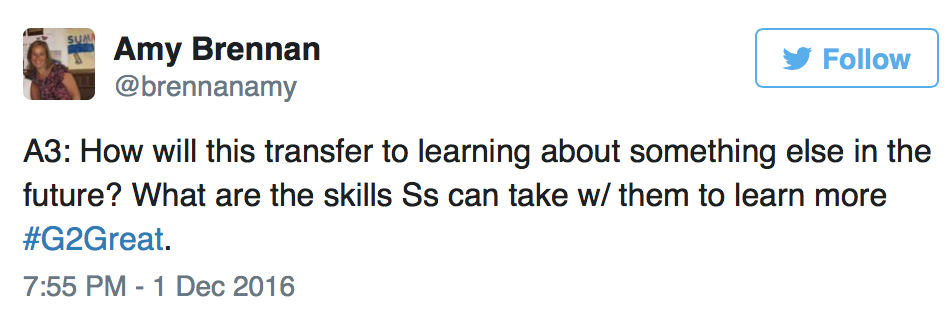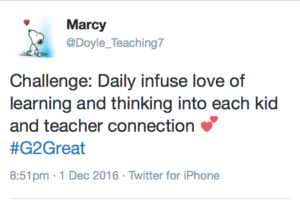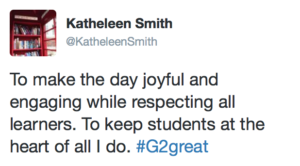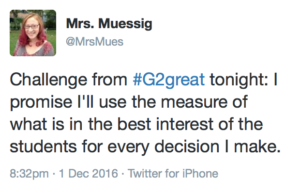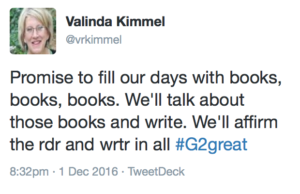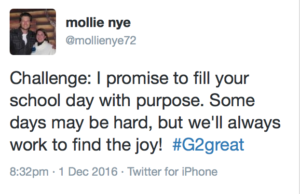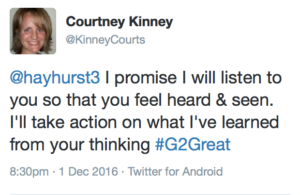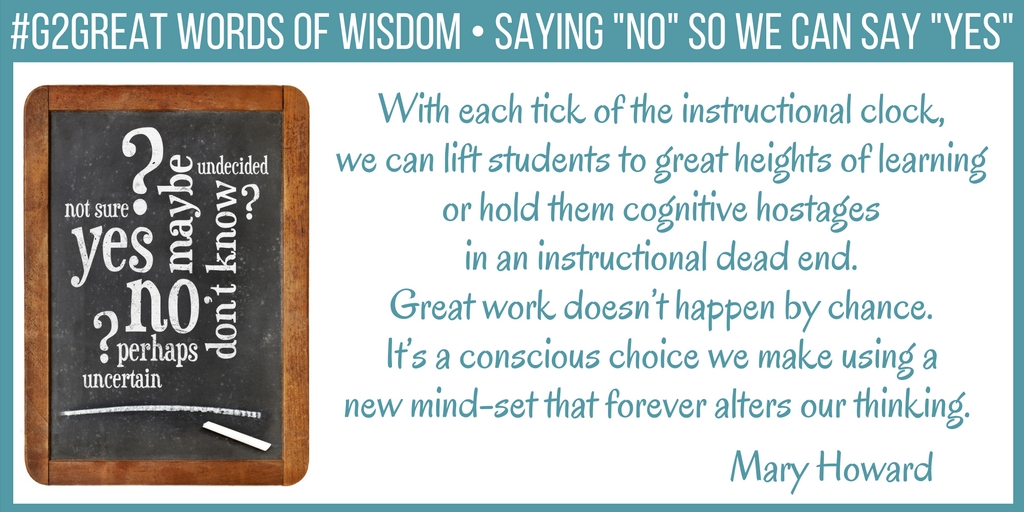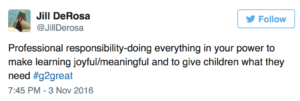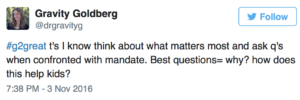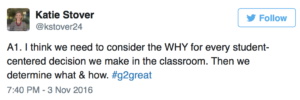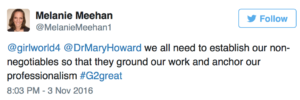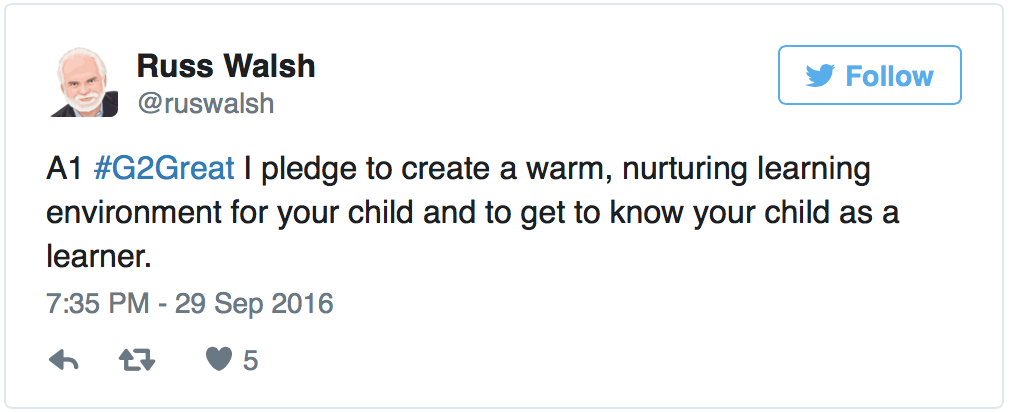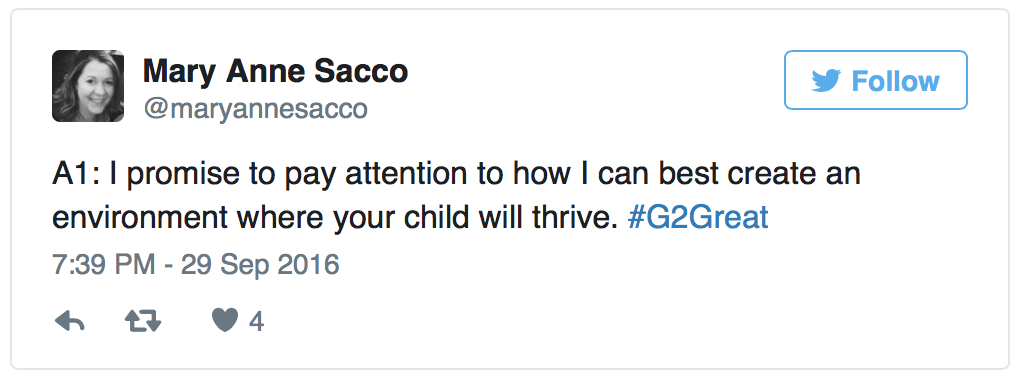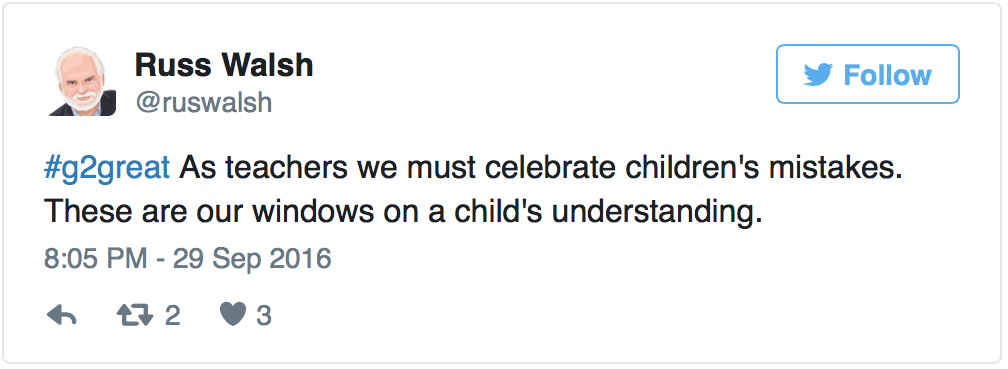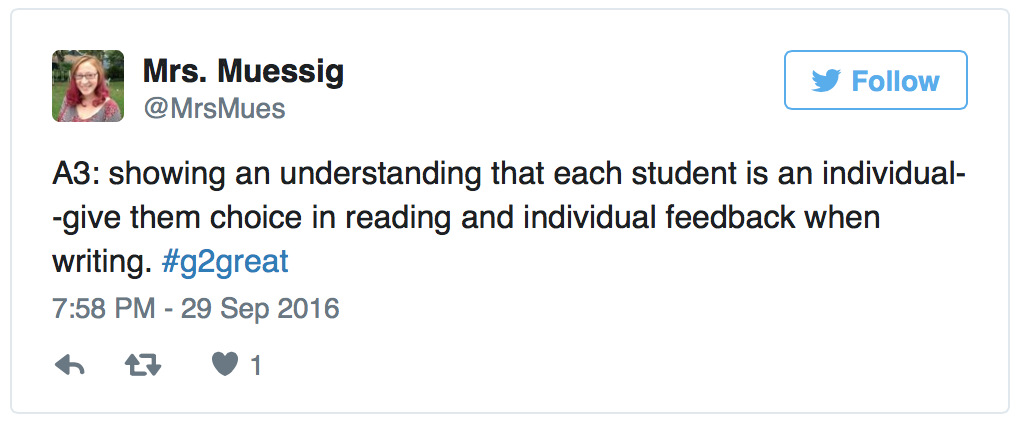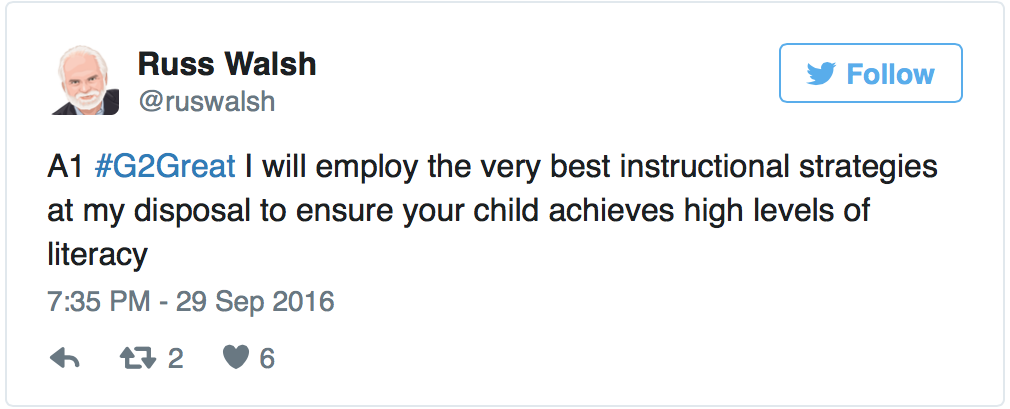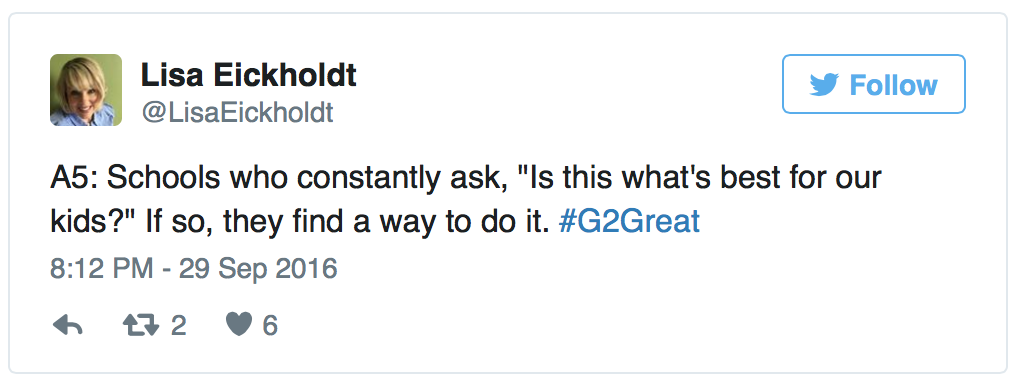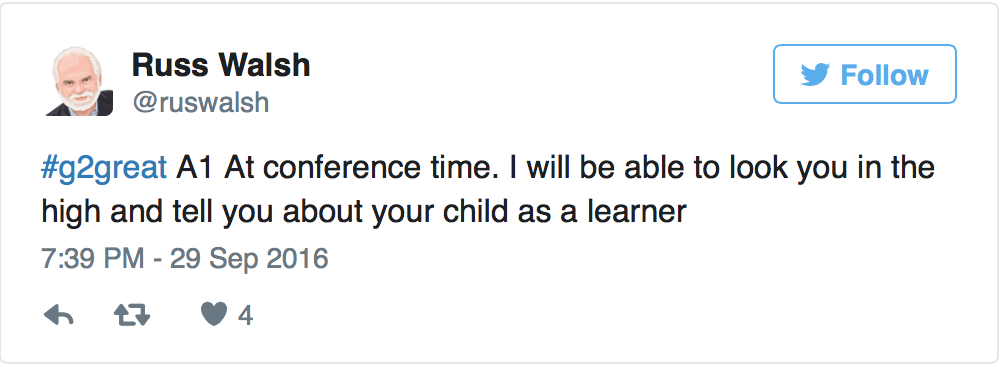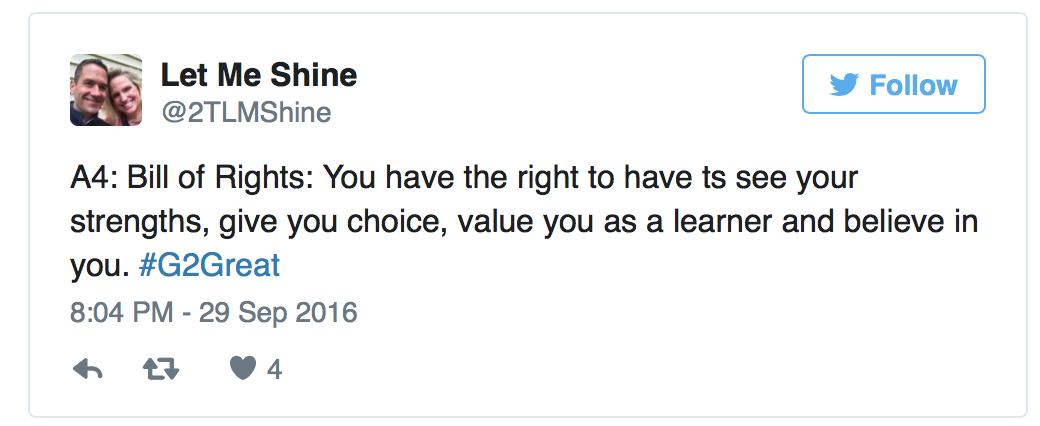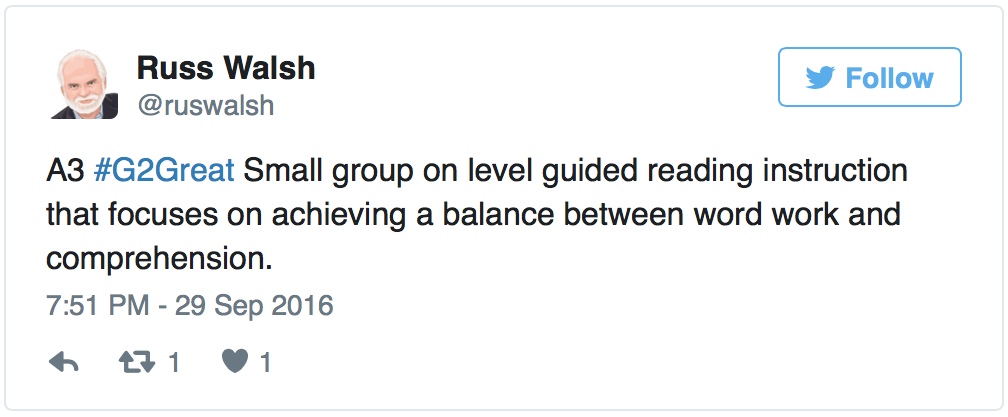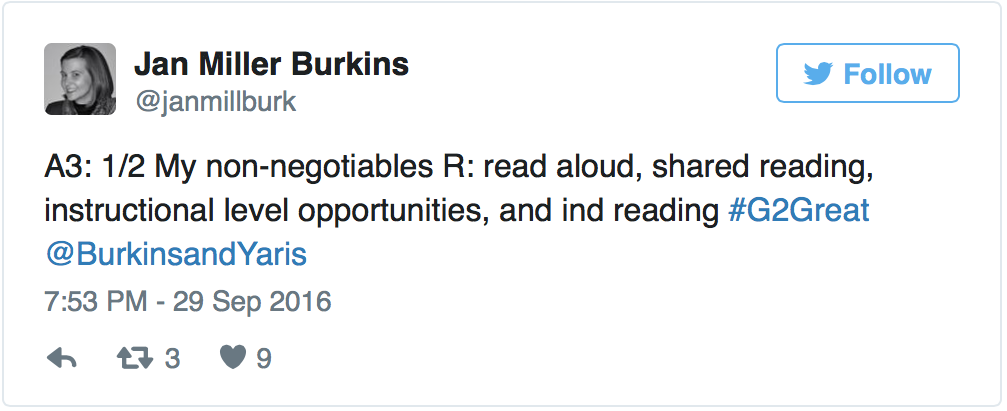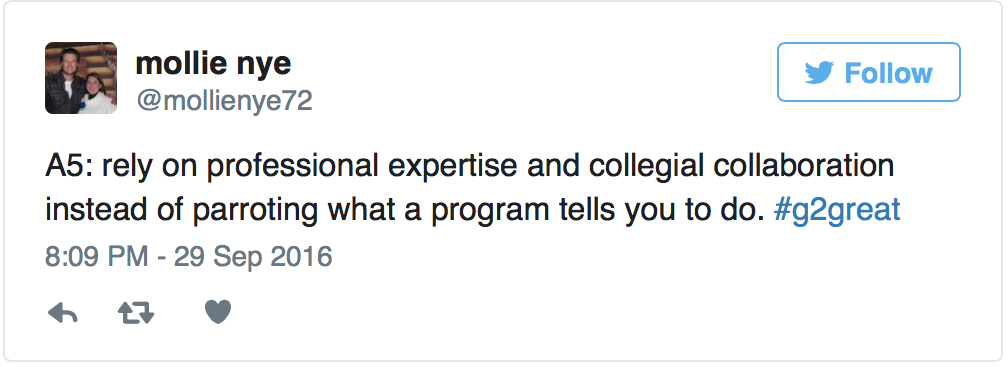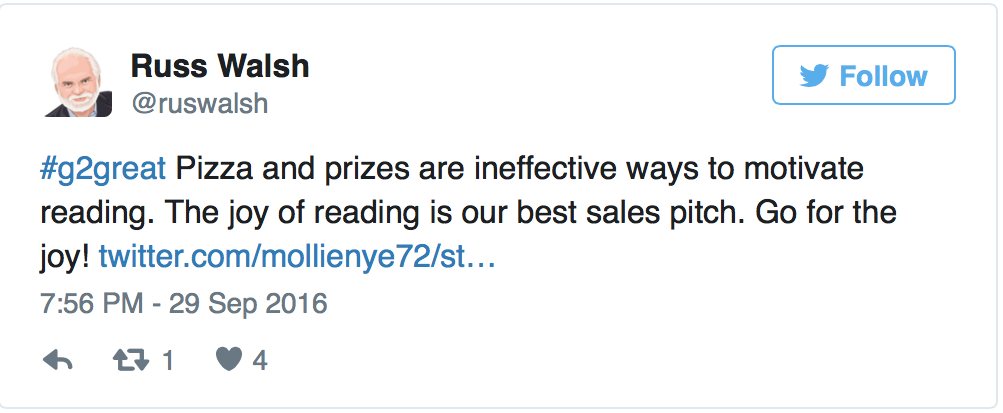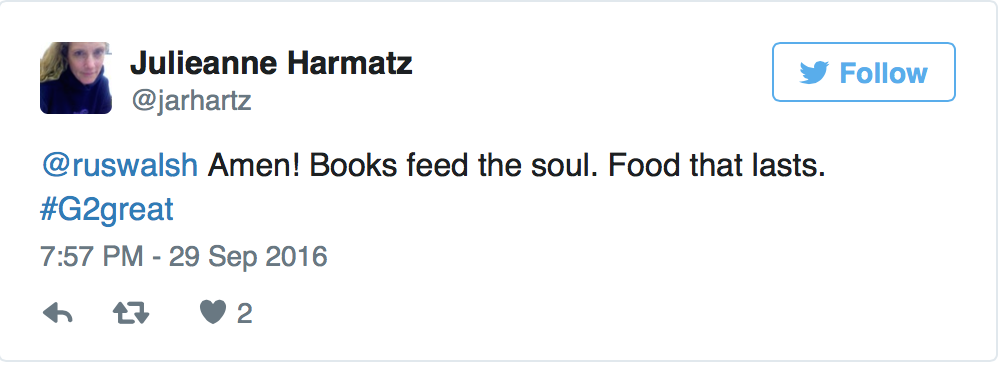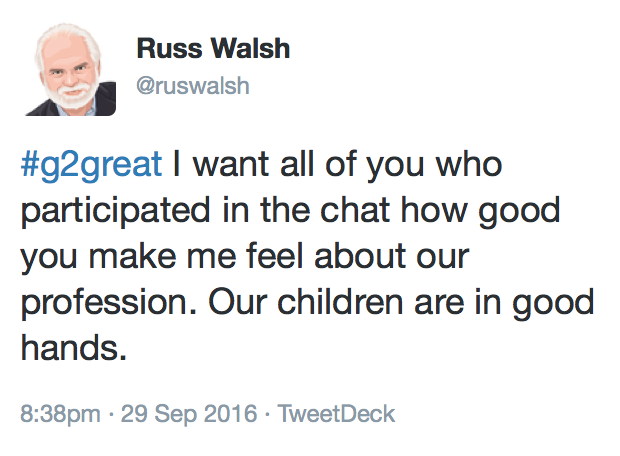by Mary Howard
On 4/20/17 #G2Great was honored to open our welcome door to guest hosts Dorothy Barnhouse and Vicki Vinton as we explored their co-collaboration gem, What Readers Really Do: Teaching the Process of Meaning Making (Heinemann 2012). From the opening tweet, it was evident that our #G2Great family wanted to be privy to what readers do. With our dynamic writing duo leading the way, we launched into a joyful exploratory venture Twitter style.
As I thought about the inspired chat dialogue, I realized that the same thing that motivated Dorothy and Vicki to write their book drove our collective enthusiasm. Through writing, they sought to understand the thinking students do in the course of their reading, motivated to ‘stalk the invisible’ for reasons reflected in a quote we shared at the beginning of the chat.
What Readers Really Do reads like a reflective diary of their efforts to confront this conflict. As the pages of their book unfold, we come to understand how they resolved their conflict through a thoughtful negotiation to new thinking that would ultimately change the way they approached reading. Through our shared conversational collaboration, we grew increasingly confident that their journey to new thinking would help us negotiate our own.
Since the book was motivated by troubling worries that may thwart our efforts to move toward new thinking, this seemed like a worthy place to start. Our first question asked teachers to name challenges they confront. Although challenges varied from texts to topics to mandates, each of these could be bundled under the umbrella of TIME! (This pesky challenge reared its ugly head on another #G2Great chat blog with Colleen Cruz)
Two early tweets from Dorothy and Vicki set the stage for tackling this issue by shifting our perspective from time as a challenge to time as an incentive. We still acknowledge time constraints we all face but adjust how we view time. We tackle this challenge by insisting on expending our precious available time in the most authentic and productive ways in spite of the inevitable challenges.
As I reflect on our remarkable #G2Great hour of wisdom with Dorothy and Vicki about what readers really do, the initial question becomes two-pronged:
What do readers really do and how can teachers create an environment that invites and nurtures readers to do those things with or without our support?
With this questions at the forefront of my mind, I perused tweets from Dorothy and Vicki and found that eight Big Ideas began to emerge. It is important to emphasize that each point is distinctive and yet inseparably interconnected. These Big Ideas can help us respond to the above question in ways that will move our collaboration from Twitter into the classroom:
Big Idea 1: Build a thinking bridge through modeling
In order to build a thinking bridge to independence, we begin by sharing the thinking that takes place as we read. By making our thinking public we are able to stalk our own invisible in order to make the invisible visible. Dorothy’s inclusion of the words “authentic” and “joyful” should be a reminder to us all to celebrate the authentic joyful spirit or reading and avoid reducing how we interact to student reading through a recipe of thoughtless sameness.
Big Idea 2: Start with the end in mind
An essential theme running throughout the book and tweets is the idea that we teach this thinking process so that students will eventually take ownership of that process. When our primary goal is to build identity and agency, we know that we must keep this goal in our sights from the beginning. We do this by offering support in the early stages but we are prepared to watch for the signs that will allow us to fade our support into the background as students assume increasing control of their own thinking.
Big Idea 3: Focus on building strategic knowledge
Making room for students to assume control of their own thinking is not about asking them to replicate our thinking. Rather, our thinking offers a supportive scaffold to help them construct their own meaning as they apply this process. This means that naming a strategy is far less relevant than helping them to be more intentional and strategic each time they engage in the thinking process. Over time and through practice, they will begin to internalize this thinking.
Big Idea 4: Be present in the teachable moment
In order to support the thinking students engage in, we must be willing to stalk their invisible in action. To do this, we must be present in students’ learning moments on a day-to-day basis so we can notice and celebrate the thinking that often happens when we least expect it. We adjust our stance from teacher to observer so that we can use our observations as stepping stones that will lead them to powerful new thinking opportunities in a wide range of varied text opportunities.
Big Idea 5: Celebrate the road to discovery
Teachers who are aware of their own thinking recognize that this process is a messy one. We know that the road to discovery can be littered with confusion, uncertainty, and possibility. Such a journey takes time so we must be willing to create experiences where students have time to linger a bit longer even when riddled with confusion, uncertainty, and possibility. This path Dorothy calls ‘huh’ to ‘oh’ is recursive rather than linear and so we support the unexpected twists and turns of thinking that can lead them from one discovery to another.
Big Idea 6: Use your noticings as next steps
We support this messy process as we become expert kidwatchers. Certainly our role as kidwatcher begins by noticing what students are doing as they read but we know that we must make them cognizant of our noticings. This allows us to support their efforts by exploring how we can use their reading to move them from where they are to where they could be. While increasing awareness of their own thinking as they read is an important part of this process, we know that awareness of NOW thinking must lead to purposeful NEXT thinking.
Big Idea 7: Gently nudge to new understandings
Noticing student thinking can help them take ownership of their own thinking if we are responsive to this process. We recognize that our responsibility is not to teach students to be compliant disseminators of knowledge by responding to preconceived answers but to pose genuine ponderings to help them to move to deeper thinking. Once we acknowledge their thinking we must then help them understand how they arrived at that thinking in the first place. This combined understanding moves them closer to agency, ownership, and independence.
Big Idea 8: Support a meandering path to meaning
When we acknowledge thinking as a process we must also acknowledge all that this implies. The dictionary defines process as a series of actions or steps taken in order to achieve a particular end. We do not view their thinking in terms of a product to be gathered at the end of reading but as a process to be supported each step along the way. Vicki celebrates this view by referring to thinking as a process of drafting and revising. We expect thinking to grow or even change and so we nurture the winding path to understanding.
After the chat ended, a final tweet with Dorothy afforded me an opportunity to make a shameless book plug.
At #G2Great we see ourselves as professional cheerleaders committed to doing our best work for students. In the past few months, we have celebrated authors who share our passionate commitment to students. We spotlight their books at #G2great because we know their words have the potential to transform every classroom into the learning spaces our children deserve.
And thus my shameless plug. We don’t just celebrate new books at #G2Great because we worry that amazing books like What Readers Really Do may be missed simply based on a 2012 publication date. We are on a mission to put books, old and new, into teachers hands because the advice of amazing authors is truly “forever young.” But rather than taking my word for it, download a free chapter of this exquisite book also available as an ebook.
Thank you Dorothy and Vicki. Your words exemplify forever young and will continue to inspire us to do this important thinking work with our students now and in the future!
More thoughts from our #G2Great friends
LINKS TO DOROTHY AND VICKI
What Readers Really Do: Teaching the Process of Meaning Making (Heinemann)
Demystifying “the Process of Meaning Making” and Close Reading (Jan Burkins and Kim Yaris on What Readers Really Do)
Dynamic Teaching for Deeper Reading: Shifting to a Problem-Based Approach by Vicki Vinton (Heinemann)
Readers Front and Center by Dorothy Barnhouse (Stenhouse)
